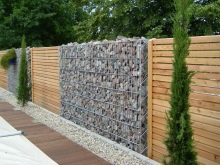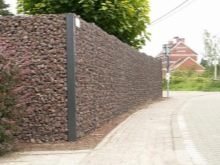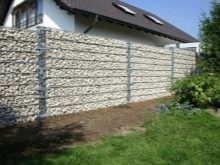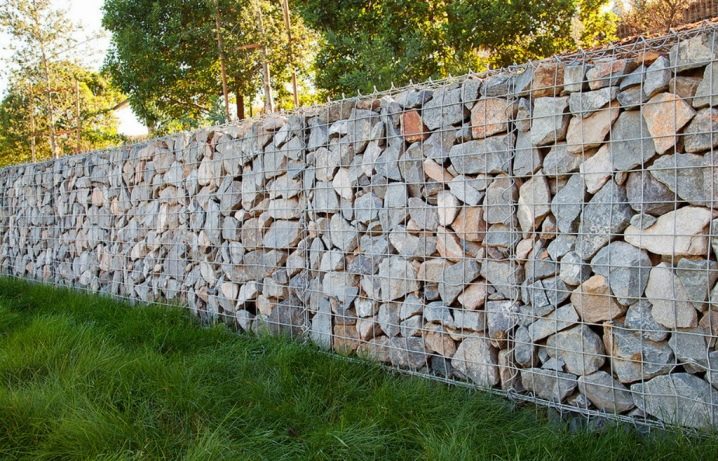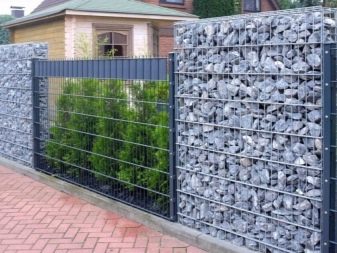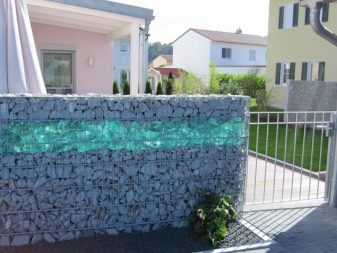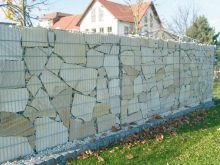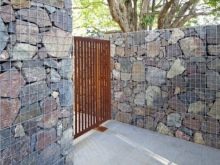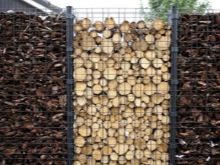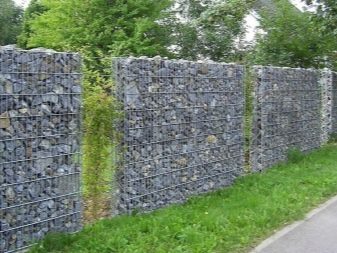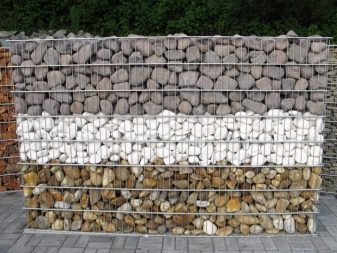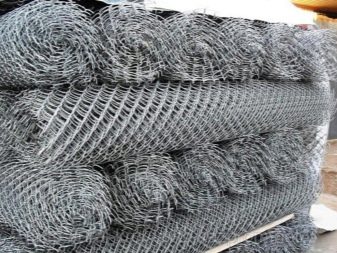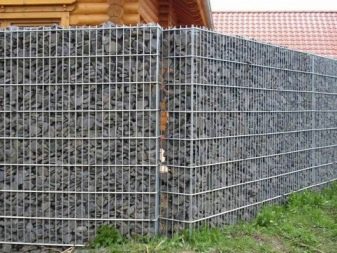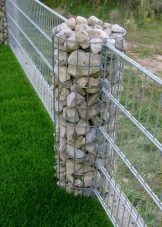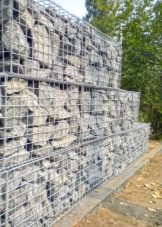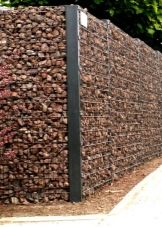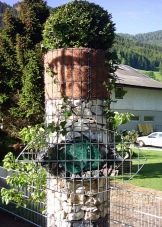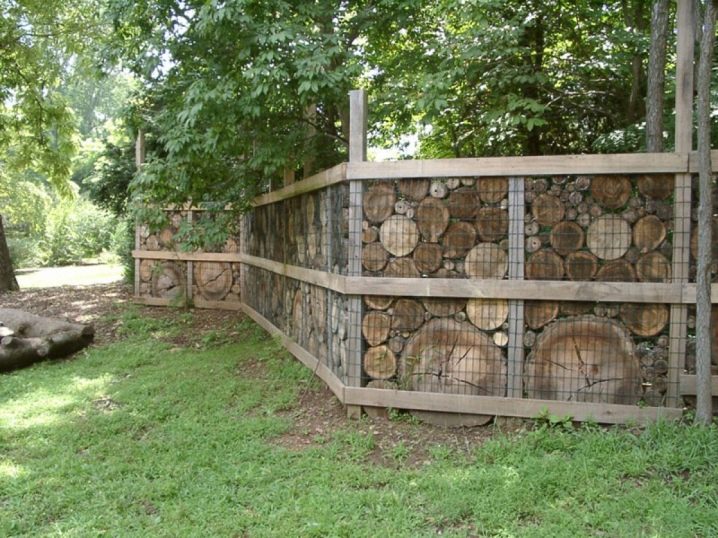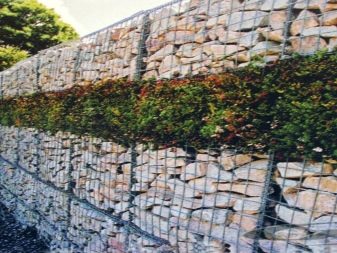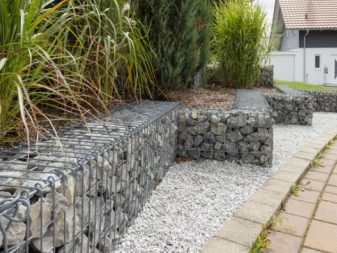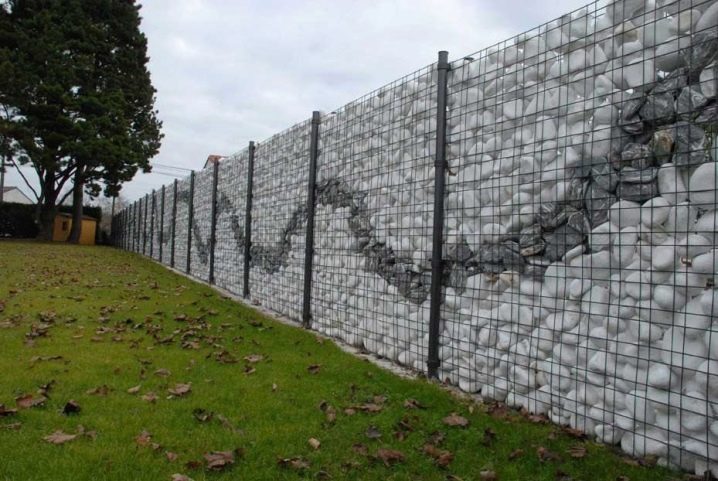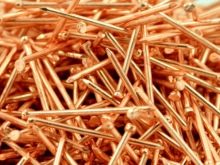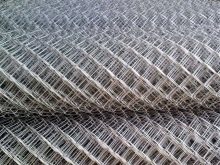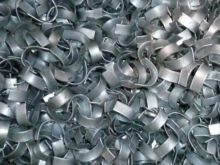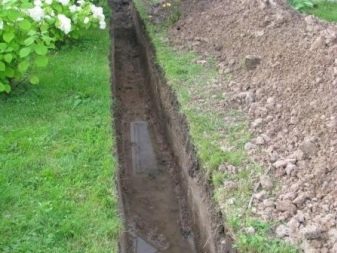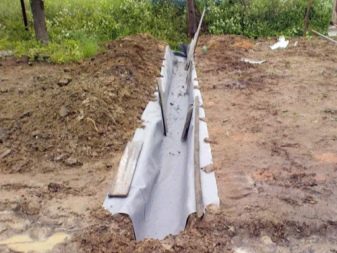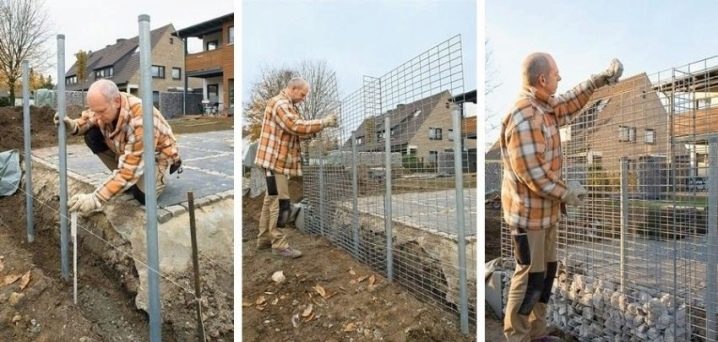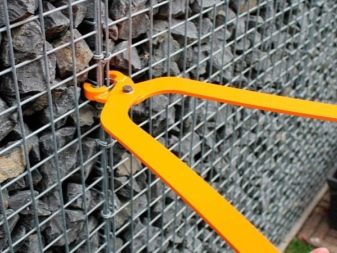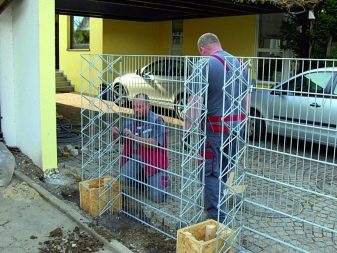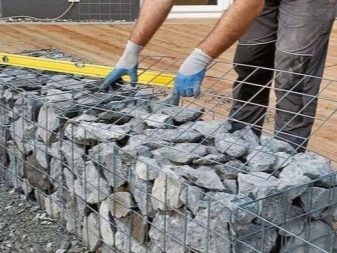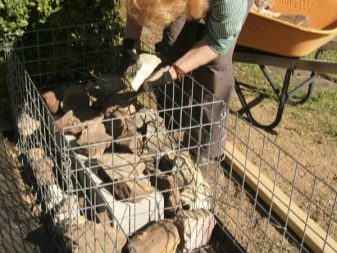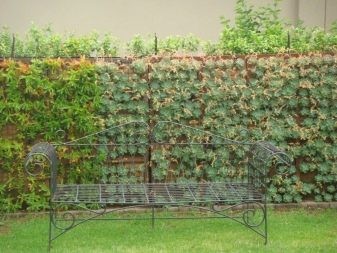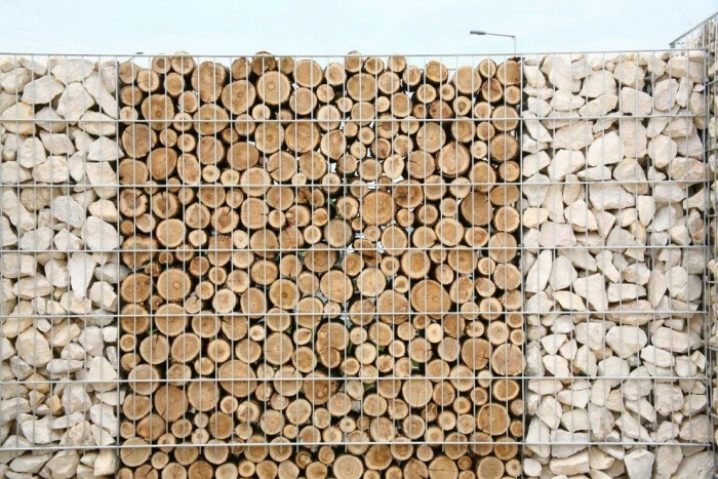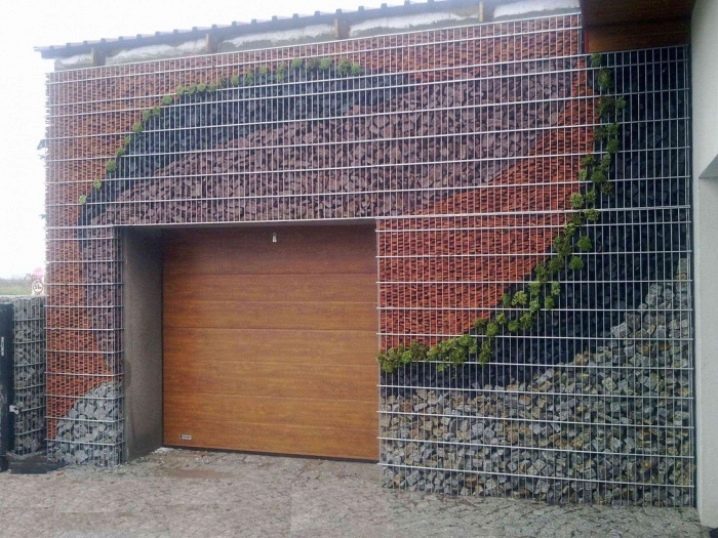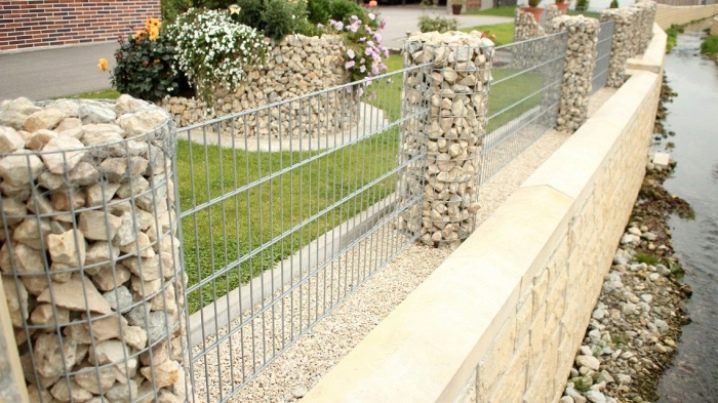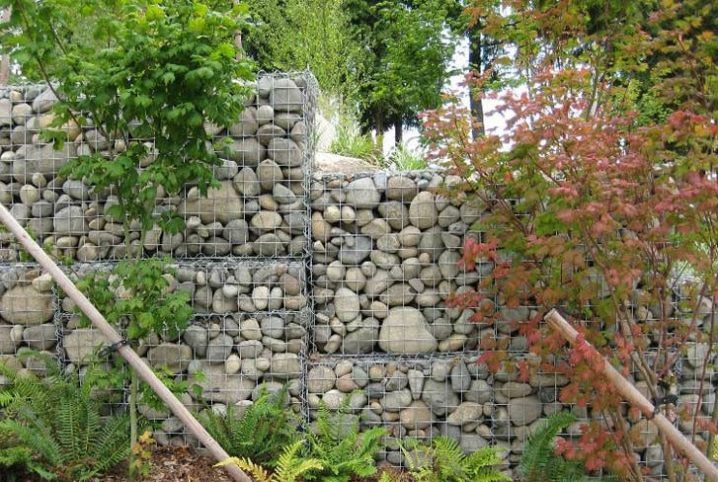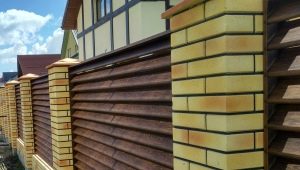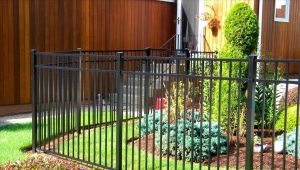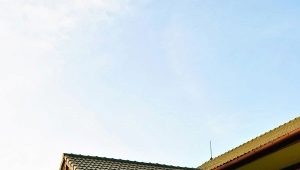Gabion fence: design features
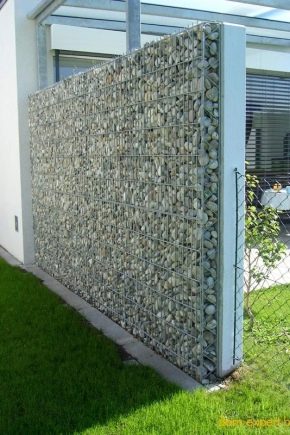
Currently there are a variety of materials that can be used to create various fences. Choosing the most suitable option, people are focused on ensuring that the finished fence has high strength and lasts as long as possible. However, the appearance of the structure also plays an important role: many opt for options that are original, unusual.
It looks very interesting fence of gabions. Such structures have certain features, but at the same time you can create your own gabion fence easily enough.
What it is?
The gabion fence consists of a filler and a metal frame (grid, grid).These fences can not be called familiar to most people, but they look very nice.
Today, gabions are more unusual elements of decor, but previously they were mainly used so that soldiers could defend themselves during the fighting.
Benefits
Such fences are distinguished by a large number of advantages. The main advantages of designs from gabions:
- Increased strength of fences. They are resistant to quite significant loads.
- Low cost. Such designs are much cheaper than brick and reinforced concrete, because they consist only of mesh and filler.
- Naturalness. Such fences fit very well into the environment, they look at the site as harmoniously as possible.
- The ability to install similar fences in areas characterized by complex terrain. You will be able to connect individual sections at such angles as you wish.
- Resilience to various atmospheric influences. Such structures are not afraid of rain, snow, temperature changes.
- Long service life. It is not necessary to take care of such fences constantly, they even for a long time retain their strength, reliability and aesthetic appearance.
- The ability to make the fence combined. Part of the fence may consist, for example, only of a grid or a tree.
- Ability to use as fillers a variety of materials. You can find use even for materials that have long been stored and considered useless.
- No need to order the installation work, rent specialized vehicles. With the creation of a gabion fence is quite possible to cope on their own, you only need to stock up on time and patience.
Species
Gabions are divided into several species (depending on the shape). The following varieties can be distinguished:
- cylindrical;
- flat;
- box-shaped.
In landscape design most often used box options. Such gabions are rectangular containers. They are used to create fences, furniture, and so on.
Flat gabions are low, wide. Most often they are used as a basis for box-shaped gabions, they are suitable for arranging reservoirs. Cylindrical options can be used to create flowerbeds, small fences.
How to choose a material?
Choosing from which it is better to create a fence, you need to focus on your own requirements for the functionality and aesthetics of the future fencing. As for the cost, in this respect there are almost no restrictions, because, in fact, such structures are created from scrap materials.
Grid
Fencing gabions are created using a solid grid. The choice of the most suitable material should be taken as seriously as possible, because the grid will hold the entire structure. Very often for the construction of gabionovogo fence get high-quality chain-link. The shape of the cells of such a grid can be square, round, and so on.
It is recommended to stop the choice on stainless steel. This material has a high corrosion resistance, it will last as long as possible. To connect the box, you can use a wire with a galvanized coating.
Filling
Having picked up a suitable grid, it will be necessary to decide on material for filling. Fences of gabions usually fill:
- brick;
- rubble;
- sandstone;
- pebbles;
- cobblestone;
- quartz;
- granite.
Other types of minerals and stones are used to make gabion fences. Some opt for artificial stone. Sometimes the mesh is filled using wood bottles.
Choosing the most suitable filler for fencing from gabions, you should consider some recommendations:
- Carefully select the size and quantity of the future filler.
- Remember also about the form, because the crushed bricks and stones look completely different. The shape of the filler can be rectangular, round, oval and so on. The final choice depends on what kind of design idea you are going to translate into reality.
- The selected material must be distinguished by resistance to low temperatures, long service life.
It is recommended to select natural materials from your region. So the beauty, naturalness of a landscape will not be broken, the design will look as harmonious as possible. In addition, this option will be more economical than transporting the necessary materials from afar.
- If you are focused on showiness, remember the following: the larger the filler, the more interesting the fence looks.
- Pick up granite with utmost care.Such materials may differ in radioactivity.
- Usually for filling gabionovogo fence choose a stone. This material is an ideal filler for the mesh. In addition, the stone fence has a high strength, and this is a very important quality.
Preparation for work
For the construction of gabion fencing will need to prepare certain materials. This list should include the following:
- wire ropes;
- metal spirals;
- wire clips;
- metal cells, lattices;
- pins (the best option is metal products);
- filler;
- nails, sand, cement;
- geotextiles.
Choose tools that may be needed for installation work. Prepare a drawing, it will be easier to install with its help.
To outline exactly where the gabion fence will be installed, use a cord or string. Stretch it to highlight the outer perimeter. Territory preparation is carried out as follows:
- Remove from the soil fertile layer, all plants, debris.
- Then you will need to dig a trench under the fence.
- To prevent the weeds from germinating, place geotextiles on its walls and bottom.
Mounting technology
Installation work must be carried out, based on certain rules. This will make the design of the most reliable and durable.
Foundation and support columns
The next step is the creation of the foundation for the fence. This is necessary if you want the fence to last as long as possible. You can pour tape foundation. Put the armature on the bottom of the trench and use the prepared material. While the concrete dries out, you need to water the foundation with water, especially if you carry out installation work in the heat.
The gabions themselves can not be fixed with a foundation, but in any case it will have to be done with supporting pillars. Otherwise they may not support the weight of the fence. The pillars should be about two meters apart. When you outline where the supports will be, dig up small holes in these places (their size is approximately 200 by 200 mm). Depth needs to be determined, being guided by height of a basic column (optimum option in most cases - 1/3 of its height).
It is recommended to use profiled pipes as supports. Their cross section should be rectangular.
Install the pillars, fix them using struts from a timber or planks, and pour cement into the pits. To remove various voids, tamp material using crowbar. Leave the support for a few days to make the material as strong as possible.
How to fix the canvas?
Assemble the net from the supports. First you need to connect the corners of the box. When doing this, make sure that everything is on the same line. Fasten the ribs using wire. Strengthen the corners with steel rods.
The frame must be attached to support posts using studs with bolts or welding. When you use a filler, it will hide the supports. To connect individual boxes to each other, use staples and wire. From time to time, check the leveling of the structure using a level. After installing the base of the mesh, you can attach a long rail outside: by doing so, you will ensure the evenness of the fence when laying the filler.
How to fill the filler?
Filling the base with stones or other filler is a process that can be called the most creative of all the above. Laying is carried out not in one stage, but in two. First put the filler to half the height of the fence.Then tighten the walls using thin steel cables, so you can avoid the protrusion of the mesh due to the weight of the filler. "Flash" will need all the fourth or fifth cells.
Then you can fill the free space. Laying filler in a very high gabion should be carried out in 3 stages. Stones will need to be laid one by one, with maximum accuracy. Rows should be made even using a board.
If the area of the fence is small, you can pour the filler out of the bucket. It must be laid as tightly as possible: there should be no pronounced voids.
If you wish, you can fill the middle of the fence, invisible to the eye, not with stone, but with splinters of brick, construction debris, and so on. This will not affect the quality of the design. So that additional materials do not fall into the main one, lay the layers with geofabric.
Place relatively small stones at the top, this will have a positive effect on shrinkage. The cover must be installed last. It can also be connected using clamping brackets or wire. After completion of the installation work, rinse the filler with a hose.
If you want to make the fence more beautiful, decorate it with interesting plants (for example, they can curl). They can be planted between the stones. Plants and stones together look very interesting, so many prefer to use gabions as beds in several tiers, flower beds, unusual flower beds.
Interesting examples
For filling gabion fences you can use different materials, for example, this option looks very interesting.
Creating constructions from gabions, you can translate into reality your design ideas.
A very common option is combined fencing. Cylindrical gabions are very suitable for them.
Fences from gabions look very harmonious with plants.
How to make a fence from the gabion with your own hands, see the next video.
